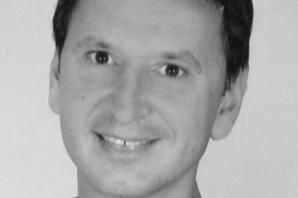New tools to understand the large-scale behaviour of complex systems
Understanding complex structures means separating irrelevant information to get to something simpler and easier to understand. When you look at something from a distance – although you don’t see all the details, you can still describe what you see. ERC grantee Balázs Szegedy has developed several mathematical tools for providing a compressed yet useful view of complex structures.

When it comes to understanding complex systems, the challenge is to separate the signal from the noise. For example, to describe how water flows, you don’t need to ‘see’ the position of every single molecule, a course, large-scale view is often enough to predict the behaviour of the system. “To understand complex systems, we usually don’t need a complete description of all the parts,” says Prof. Szegedy. “The challenge is to separate the relevant information, known as the structure, from the irrelevant noise".
To help researchers make this separation, the StrucLim project developed a variety of mathematical tools for compressing data describing large, complex systems into a simpler, more practical form. Many of these tools are based on the emerging subject of graph limit theory. “An important achievement of the project is that we were able to connect random matrix theory with graph limit theory through our results on random regular graph,” explains Prof. Szegedy. “It is always exciting to find connections between different fields".
In graph limit theory, the project developed methods for studying the large-scale behaviour of bounded degree random networks and many other sparse networks. In higher order Fourier analysis, the StrucLim team researchers obtained a unified treatment of the so-called Gowers norms and Host-Kra semi-norms. “These results have various applications. For example, we obtained a structure theory for the characteristic factors of the Host-Kra semi-norms for nilpotent actions.” says Prof. Szegedy.
Balázs Szegedy is a Hungarian mathematician. After finishing his PhD in 2003, he held short term positions at Microsoft Research and the Institute for Advanced Study (USA). In 2006, he joined the University of Toronto (Canada) and he returned to Hungary in 2013. Currently he works at the Alfréd Rényi Institute of Mathematics. His research focuses mainly on combinatorics and group theory.


